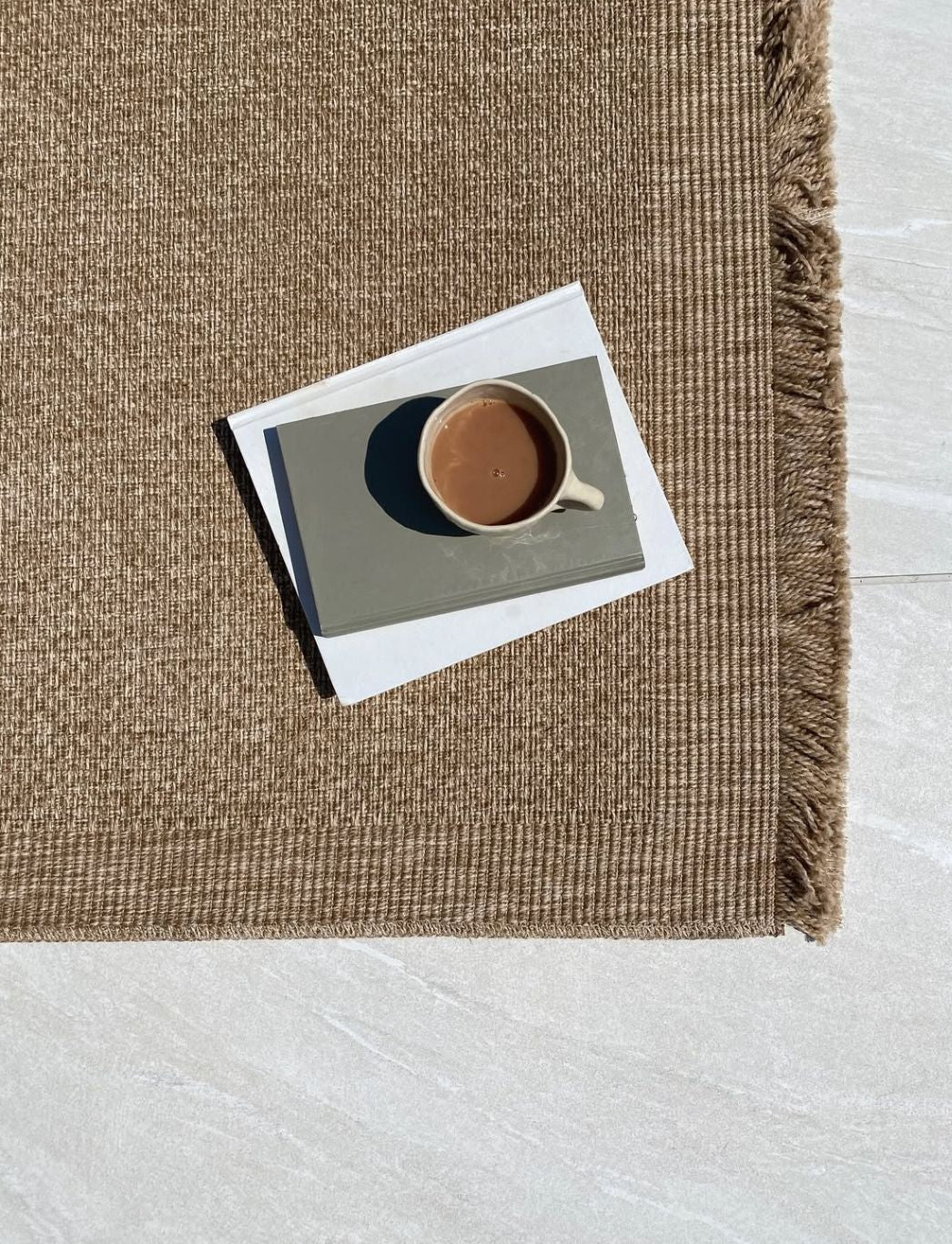How to Remove Blood from Rug: Simple Steps to Save Your Rug
Blood stains on your beautiful carpet might seem like a disaster. A quick response to remove blood from rug fibres can save your floor covering. Blood ranks as one of the most stubborn stains you'll ever face. Blood's haemoglobin reacts with oxygen and binds to carpet fibres, which makes the stain harder to remove as time passes.

Here's the silver lining - you can handle this common household emergency with the right methods. Your success in removing blood stains depends on timing. Quick action makes the cleanup much easier. Temperature plays a vital role too. Cold water works best since warm water makes blood set deeper into carpet fibres.
Your carpet's anti-stain treatment might not be enough to prevent persistent blood stains. These stains do more than just look bad - they create hygiene risks if you leave them untreated. Blood proteins bond with carpet fibres and can lead to permanent staining. Unpleasant odours and bacterial growth might follow over time.
This piece walks you through simple techniques that work on both fresh and dried blood stains. You'll also learn special tips to clean delicate materials like wool rugs.
Why Blood Stains Are Hard to Remove
Blood stains pose unique cleaning challenges because they're not just simple liquids. These stains contain complex biological elements that make carpet cleaning especially tough.
How blood binds to carpet fibres
Blood's composition makes it one of the toughest stains to tackle. The proteins in blood create strong chemical bonds with carpet's fibres, and these bonds resist standard cleaning methods. These attached proteins create a tough barrier that cleaners struggle to break down.
Blood's haemoglobin starts to coagulate as soon as it meets air. This clotting process helps heal wounds but creates problems on your rug. The iron in blood also oxidises as time passes, which turns bright red stains into dark brown ones. Your carpet's fibres lock these oxidised stains deep within their structure.
Rug owners should worry about blood's deep penetration. The liquid seeps past the surface pile quickly and reaches the carpet's primary backing. A small blood spot on top might hide a much bigger stain underneath. You can't just clean the surface and expect the stain to disappear.

Why time and temperature matter
Your rug's fate depends on how fast you act after blood touches it. Fresh stains come out substantially easier because proteins haven't bonded completely with carpet fibres. Blood changes chemically on carpet as time passes:
Starts as bright red liquid
Gets substantially darker within 24 hours
Dries out and shows visible cracks
Turns brownish after 72 hours
Temperature plays a crucial role in stain formation and removal success. Blood dries in 30 to 60 minutes, and this happens faster in warmer conditions. That's why summer spills set quicker than winter ones.
The wrong water temperature can lock the stain forever. Hot water makes blood proteins coagulate and bond stronger to carpet fibres. So always use cold water to clean blood stains.
Blood stops transferring to other surfaces at different rates based on temperature. The transfer rate drops by about 50% every time the temperature rises by 20°C. The transfer stops after 41 minutes in cold conditions, 22 minutes at room temperature, and 13 minutes in hot environments.
Quick action with proper techniques gives you the best shot at removing blood from rugs. The stain becomes substantially harder to remove once proteins bond and the blood dries, and you might need special cleaning methods.

How to Remove Fresh Blood from a Rug
Quick action gives you the best shot at removing fresh blood spills completely. These stains haven't set into carpet fibres yet, so you can get great results with common household items. Here's the quickest way to tackle fresh blood on your rug.
Blotting with a clean cloth
Your first significant step after making sure everyone's safe is quick action on the blood. Take a clean, white cloth or paper towel and start blotting—not rubbing—the stain. Start from the outer edges and work your way in to keep the blood from spreading across your rug. This method contains the stain and pulls out as much liquid as possible before it soaks deeper into the fibres.
A white cloth or paper towel prevents any dye transfer to your carpet that could create another problem besides the blood stain. Keep blotting until the cloth stops picking up blood. Note that hard scrubbing only pushes blood deeper and might damage your carpet's texture.

Using cold water only
Cold water works surprisingly well on very fresh stains after you've blotted up the excess blood. Use a spray bottle with cold water and lightly spray the stained area, or apply cold water carefully with a clean cloth if you don't have a spray bottle.
Never use warm or hot water because it makes blood proteins coagulate and set permanently into carpet fibres. Cold water dissolves these proteins before they bond with the carpet. Blot again with a clean, dry cloth after applying cold water. Keep spraying cold water and blotting until the stain vanishes or no more blood transfers to your cloth.
Dish soap and water method
A mild dish soap solution works great on stubborn fresh blood stains:
Mix one tablespoon of dish soap with two cups of cold water
Apply this solution to the blood stain with a clean cloth
Blot the stain gently—don't rub or scrub
Rinse by blotting with a cloth dampened with cold water
Dry blot with a clean towel to remove excess moisture
Let the area air dry completely or use a wet vacuum
This method works because dish soap breaks down blood proteins without harming carpet fibres. You must rinse to remove soap residue, or it will attract dirt if left in the carpet.

When to use vinegar solution
Vinegar helps with stubborn fresh blood stains that won't budge with simpler methods. Its high acidity and antimicrobial properties make it great for blood removal.
Mix one cup of white vinegar with two cups of cold water to create an effective solution. Spray it directly on the stain, or soak a clean cloth in the mixture and blot repeatedly. Keep going until the blood stain dissolves.
Blot with a cold water-dampened cloth afterward to remove vinegar residue. Then blot dry with a clean cloth and let the area air dry completely.
Really tough stains might need a modified solution with four tablespoons of baking soda added to the vinegar-water mixture. Let it sit on the stain for at least 30 minutes before rinsing and drying as described above.

How to Remove Dried Blood from a Rug
Dried blood stains are tougher to clean than fresh ones. Fresh blood can be blotted away easily, but dried blood bonds with carpet fibres and becomes harder to remove. The good news is you can get rid of even the most stubborn dried blood stains from your favourite rug with the right approach.
Loosening dried blood with cold water
The first step is to rehydrate the stain to break down hardened proteins. Get a clean spray bottle, fill it with cold water and dampen the stained area well. When dealing with bigger stains, start spraying from the outer edges and work your way in to keep the blood from spreading. This method helps contain the blood and stops it from seeping into clean areas of your rug.
Cold water helps break down and dilute the blood, which makes removal easier. You might think warm water would work better, but it actually sets the stains permanently into the fibres. After spraying, use a clean white cloth to blot until you've lifted as much blood as possible.

Salt or cornstarch paste method
Here's a great way to pull blood from carpet fibres using items from your kitchen:
- Create a thick, gritty paste like cake batter by mixing salt or cornstarch with cold water
- Cover the whole bloodstained area with plenty of paste
- Let it sit for at least an hour - the longer the better
- Brush or vacuum the dried residue away
- Use a damp cloth to blot away any leftover paste
- Salt and cornstarch work wonders because they naturally pull moisture - and blood - from carpet fibres. The paste soaks up the blood and lifts it right out of your rug.

Hydrogen peroxide for stubborn stains
Hydrogen peroxide is a powerful option for really tough dried blood stains. This chemical breaks down blood through oxidation. Just remember to test it on a hidden spot first since it might lighten coloured carpets.
Put a small amount on the stain with a cotton swab or clean cloth. You'll see it fizz and bubble as it reacts with the blood proteins. Give it five minutes, then blot with a paper towel. Make sure to rinse with cold water afterward to get rid of any remaining peroxide.

Using a steel brush carefully
A steel brush can help break up really stubborn dried blood before you start cleaning. Hold it at an angle and brush the stain gently. This breaks up hardened blood without pushing it deeper into the carpet.
Be extra careful with delicate or looped rugs. Use very light pressure to avoid damaging the carpet fibres. Once you've loosened the dried blood, vacuum up the particles before moving on to any of the cleaning methods above.
Safe Cleaning for Delicate Rugs
Delicate rugs need special care to remove blood stains. Wool and sisal have unique qualities that make them easy to damage with regular cleaning methods. You need to know these specific requirements to remove stains without harming your valuable rugs.
How to remove blood from wool rug
Wool rugs need gentler care than synthetic fibres. Wool's natural structure makes it sensitive to cleaning products. The fibres must stay slightly acidic after cleaning to stay strong. Here's how to remove blood:
Blot up as much blood as possible using a clean white cloth
Apply cold water to a white cloth and blot repeatedly until no more stain transfers
Mix a pH-neutral or slightly acidic solution using a WoolSafe Approved Pet Stain Remover
Apply the solution to a damp white cloth and blot gently
Dry the treated area with a clean cloth and arrange the pile
Hot water can shrink wool rugs, so never use it. You can use sodium percarbonate in tiny amounts for tough stains, though some experts worry about using it on wool.

Testing cleaning agents on hidden areas
You should always test any cleaning solution on delicate rugs first. This crucial step helps you check if cleaners will cause discoloration, bleaching, or fibre damage.
Pick a hidden spot to test - maybe under a radiator or in a corner. Put a small drop of cleaner on an area about the size of a postage stamp. Watch how the rug reacts to make sure the colour stays fast and the material stays safe.
This quick test protects your valuable rug and lets you clean with confidence.
Avoiding ammonia on natural fibres
Harsh chemicals can easily damage natural fibre rugs. Never use ammonia-based products on wool carpets. Sisal carpets will suffer permanent damage from bleach, ammonia, or similar harsh chemicals.
Better options than ammonia include:
pH-neutral cleaning solutions made for natural fibres
Gentle blotting techniques instead of scrubbing
Dry cleaning methods for highly absorbent fibres like sisal
Sisal and other natural fibres soak up moisture quickly and don't handle wet cleaning well. Steam cleaning can make these rugs shrink, warp, and grow mildew. Try using dry carpet cleaning powders made specifically for natural fibres instead.

When to Call a Professional
Your DIY cleaning methods might not always work on blood stains. The right time to call a professional can protect your rug from lasting damage.
Signs the stain has penetrated deep
A professional cleaning service becomes essential if blood goes deeper than the carpet surface. You need expert help if:
- Blood has made its way into the underlay and possibly the subfloor
- Stains keep coming back after you clean them - what experts call 'wick back'
- The stain is too large or affects valuable items
- Regular household cleaning methods haven't worked
Expert technicians handle these tough situations better than standard cleaning methods.

Benefits of expert carpet cleaning
Professional cleaners bring several key advantages that DIY methods can't match:
They have special training, safety gear, and commercial-grade equipment built for tough stains. These experts don't just remove visible stains - they sanitise the entire area. Their detailed documentation helps with insurance claims and meets regulations.
Professional cleaners also stop contamination from spreading to other areas. The powerful truck-mounted systems they use pull out dirt and stains that regular hoovering misses.

Stain protection for future spills
Professional cleaning services often add protective treatments that:
Make your carpet last longer Shield against new stains Keep carpets clean longer
These protective treatments stop spills from sticking to carpet fibres. This makes cleaning easier next time around.

Conclusion
Blood stains on rugs pose a real challenge. Quick action combined with proper techniques can rescue your precious floor coverings. Cold water works as your best first defence against blood stains, while warm water makes the stain set deeper. A gentle blotting followed by simple solutions like dish soap or vinegar works well on fresh stains. Dried blood needs more work with salt pastes or hydrogen peroxide.
Delicate materials like wool or sisal need a different approach. These natural fibres just need gentler treatment and specific cleaning solutions to avoid damage. You should test any product on a hidden area first to avoid potential risks.
These methods should help you handle blood stains at home effectively. All the same, some cases require professional help, especially when you have deep stains or large affected areas. Professional cleaners have specialised equipment and expertise to remove even the most stubborn blood stains and provide protective treatments against future spills.
Note that blood stains rarely become permanent if you address them properly. These techniques will help you handle unexpected accidents confidently and protect your beautiful rugs from lasting damage.
Key Takeaways
Quick action and proper technique can save your rug from permanent blood stain damage, even when accidents seem catastrophic.
• Act immediately with cold water only - Fresh blood responds to simple blotting and cold water, whilst hot water permanently sets stains into fibres.
• Use household items for effective removal - Dish soap, white vinegar, salt paste, or hydrogen peroxide can tackle both fresh and dried blood stains successfully.
• Test delicate rugs first - Always patch test cleaning solutions on wool or natural fibres in hidden areas to prevent discolouration or damage.
• Know when to call professionals - Deep penetration, large areas, or valuable rugs require expert cleaning with specialised equipment and protective treatments.
• Time is critical for success - Blood proteins bond stronger with carpet fibres every minute, making immediate treatment essential for complete removal.
The key to successful blood stain removal lies in understanding that blood is a complex biological substance containing proteins that bind tightly to carpet fibres. With the right approach—cold water, gentle techniques, and appropriate cleaning agents—most blood stains can be eliminated without professional intervention.
FAQs
Q1. How quickly should I act to remove blood from my rug? Time is critical when dealing with blood stains. Act immediately using cold water, as blood proteins bond more strongly with carpet fibres every minute. Quick action significantly increases your chances of complete stain removal.
Q2. Can I use warm water to clean blood stains from my rug? No, never use warm or hot water on blood stains. Cold water is essential as it helps dissolve blood proteins without setting the stain. Warm water causes blood to coagulate and permanently bond with carpet fibres, making the stain much harder to remove.
Q3. What household items can I use to remove dried blood from my rug? For dried blood stains, you can create a paste using salt or cornstarch mixed with cold water. Apply this paste to the stain, let it sit for at least an hour, then brush or vacuum it away. For stubborn stains, hydrogen peroxide can be effective, but always test it on a hidden area first.
Q4. How do I safely clean blood from a delicate wool rug? For wool rugs, use a pH-neutral or slightly acidic cleaning solution specifically designed for wool. Blot gently with a white cloth dampened with the solution, then dry the area with a clean cloth. Avoid using hot water or harsh chemicals, as these can damage wool fibres.
Q5. When should I call a professional carpet cleaner for blood stains? Consider professional cleaning if the blood has penetrated deep into the carpet, if you notice stains reappearing after cleaning (known as 'wick back'), or if the stain covers a large area. Professionals have specialised equipment and expertise to tackle stubborn stains and can also apply protective treatments to guard against future spills.










Leave a comment